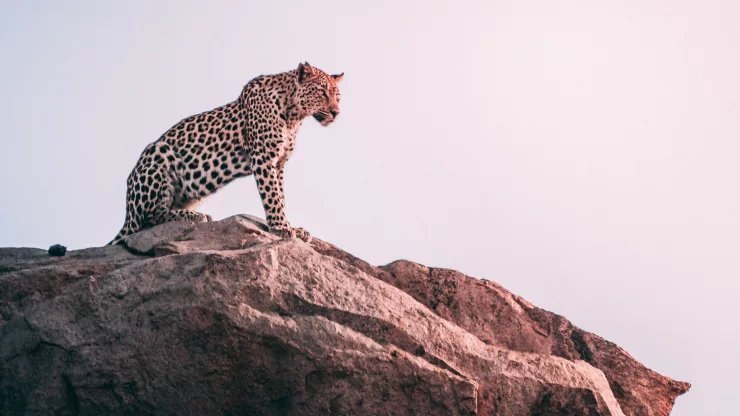Urban Wildlife Monitoring: Tracking Animals in the City
As cities grow and expand, wildlife has adapted to the urban environment.
From raccoons to coyotes, urban wildlife has become a common sight in many cities around the world.
However, with this increase in wildlife presence comes the need for monitoring and managing these populations.
Urban wildlife monitoring is a crucial tool in understanding and managing the relationship between humans and wildlife in the city.
This article will explore the importance of urban wildlife monitoring, the tools and techniques used for monitoring, and best practices for successful monitoring programs.
Jump to Section
Understanding Urban Wildlife Monitoring: Tracking Animals in the City
The Importance of Urban Wildlife Monitoring
Urban wildlife monitoring is essential for understanding the behavior and populations of animals in the city.
It can help identify potential conflicts between humans and wildlife, inform habitat management and conservation efforts, and aid in public health and safety.
The Benefits of Monitoring Urban Wildlife
There are several benefits to monitoring urban wildlife, including:
- Identifying potential conflicts between humans and wildlife.
- Informing habitat management and conservation efforts.
- Aiding in public health and safety.
- Understanding the effects of urbanization on wildlife populations.
- Engaging and educating the public about urban wildlife.
The Risks of Not Monitoring Urban Wildlife
Failing to adequately monitor urban wildlife can lead to negative consequences, including:
- Increased conflicts between humans and wildlife.
- Damage to property and infrastructure.
- Spread of disease.
- Decreased biodiversity.
- Negative impacts on public health and safety.
Urban Wildlife: Who and What to Monitor
Common Urban Wildlife Species
There are several species of wildlife commonly found in urban areas, including:
- Raccoons
- Skunks
- Squirrels
- Coyotes
- Birds
- Rats
- Opossums
Factors Affecting Urban Wildlife Populations
Several factors can affect urban wildlife populations, including:
- Habitat loss and fragmentation
- Climate change
- Pollution
- Human development and expansion
Choosing the Right Monitoring Techniques
Choosing the right monitoring techniques depends on several factors, including:
- The species being monitored
- The research question
- The available resources
- The ethical considerations
Tools and Techniques for Urban Wildlife Monitoring
Traditional Techniques: Traps, Cameras, and Marking
Traditional techniques for monitoring urban wildlife include:
- Live traps for capturing and releasing animals
- Trail cameras for photographing and recording behavior
- Marking techniques such as radio collars or ear tags to track individual animals
Advanced Techniques: GPS Tracking and Remote Sensing
Advanced techniques for monitoring urban wildlife include:
- GPS tracking to monitor movement and behavior
- Remote sensing to gather data on habitat and environmental conditions
Ethical Considerations in Urban Wildlife Monitoring
When monitoring urban wildlife, it is essential to consider ethical considerations such as:
- Animal welfare
- Privacy concerns
- The potential impact on the environment and other species
Best Practices for Urban Wildlife Monitoring
Planning Your Monitoring Program
When planning a monitoring program, it is essential to:
- Identify research questions and goals
- Determine the species to be monitored
- Choose appropriate monitoring techniques
- Develop a data management plan
Conducting Fieldwork and Data Collection
During fieldwork and data collection, it is crucial to:
- Follow ethical guidelines
- Collect accurate and reliable data
- Ensure the safety of both researchers and animals
Analyzing and Interpreting Data
When analyzing and interpreting data, it is essential to:
- Use appropriate statistical methods
- Interpret results in the context of the research question
- Communicate findings clearly and effectively
Challenges and Opportunities in Urban Wildlife Monitoring
Addressing Challenges in Urban Wildlife Monitoring
Some of the challenges of monitoring urban wildlife include:
- Limited funding and resources
- Difficulty accessing private property
- Ethical concerns
- Public perception and engagement
Leveraging Technology for Improved Monitoring
New technologies offer opportunities for improved monitoring, including:
- Advanced mapping and data visualization tools
- Automated data collection and analysis
- Remote sensing and GPS tracking
Collaborating with Communities for Successful Monitoring
Collaborating with communities can lead to successful monitoring programs by:
- Building trust and engagement
- Gathering valuable local knowledge and expertise
- Increasing public awareness and education
Looking to the Future: The Role of Urban Wildlife Monitoring
Urban wildlife monitoring is an essential tool for understanding and managing wildlife populations in urban areas.
As cities continue to grow and expand, the need for effective monitoring programs will only increase.
By using innovative techniques and collaborating with communities, we can ensure the health and safety of both humans and wildlife in the city.
FAQ
What are some common techniques used for monitoring urban wildlife?
Some common techniques used for monitoring urban wildlife include live traps, trail cameras, and marking techniques like radio collars or ear tags.
What are some of the benefits of monitoring urban wildlife?
Monitoring urban wildlife can help identify potential conflicts between humans and wildlife, inform habitat management and conservation efforts, and aid in public health and safety.
What are some of the challenges of monitoring urban wildlife?
Some of the challenges of monitoring urban wildlife include limited funding and resources, difficulty accessing private property, ethical concerns, and public perception and engagement.
I’m a nature enthusiast and creator of Metro Wilds and have spent years exploring the great outdoors.
With a passion for environmental conservation and sustainability, I have dedicated my career to writing about the beauty and wonders of nature, as well as the threats facing our planet.
Contact me at [email protected] for assistance.





